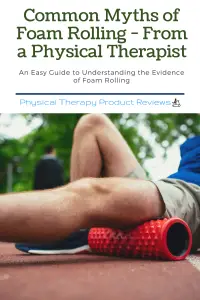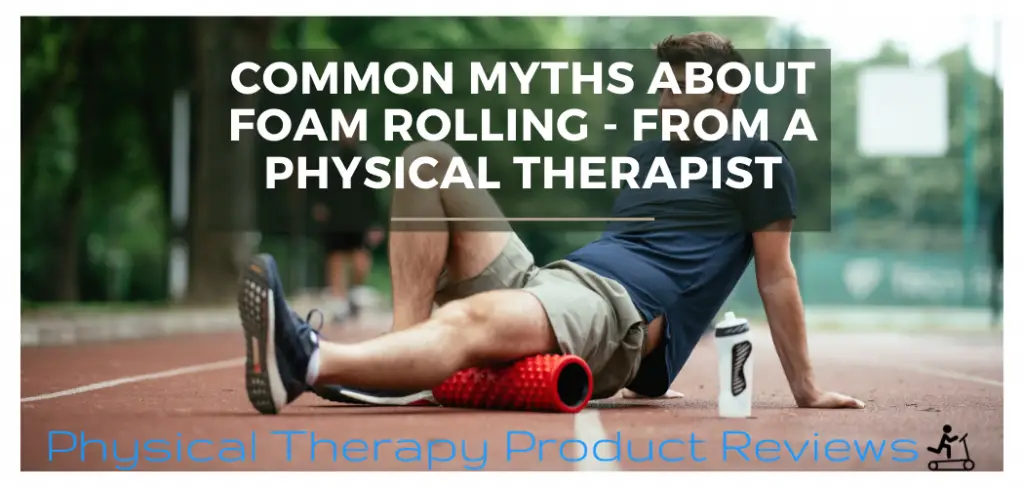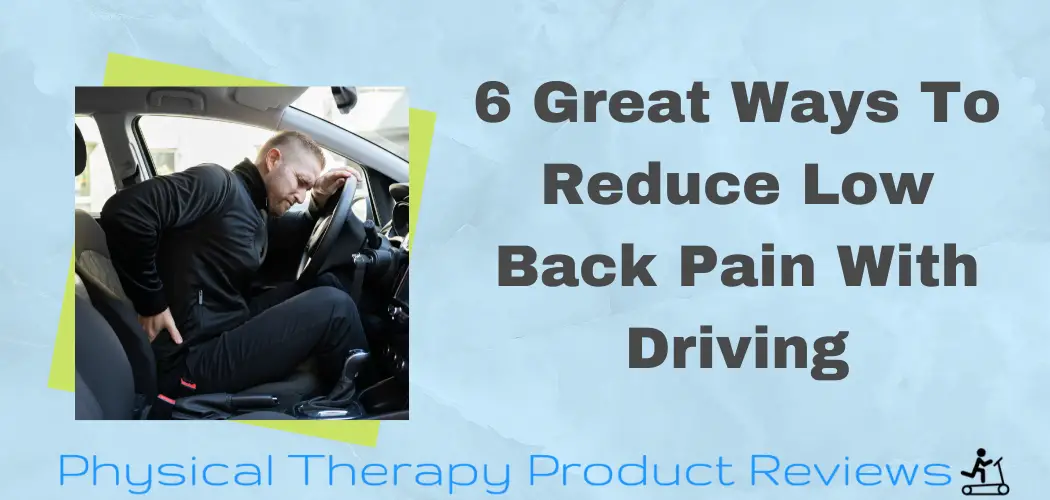 Foam rolling is a popular tool for many athletes. Sure, it feels good (…or not so good), but what does it actually do? The market is teeming with different shapes, textures, and models of rollers. Though it’s a widely used technique, there aren’t many research studies examining the effects of foam rolling.
Foam rolling is a popular tool for many athletes. Sure, it feels good (…or not so good), but what does it actually do? The market is teeming with different shapes, textures, and models of rollers. Though it’s a widely used technique, there aren’t many research studies examining the effects of foam rolling.
Yet, there are plenty of claims out there. What’s true and what isn’t? Sure, you could say “placebo-effect be damned!” and just go with it, but knowing how something works can help you get the most out of your practice. Time to dispel some of the common myths about foam rolling and infuse a bit more truth into the matter!
Myths About Foam Rolling
Foam Rolling makes you Flexible!
There are many techniques used to improve flexibility, from stretching, to dynamic motion, to manual treatments. Foam rolling is constantly touted as a method among the many. But, our current research doesn’t support it as a way to gain long-term flexibility.

A few bouts of foam rolling won’t have you doing the splits, but studies support a short-term improvement of flexibility during activity without subsequently decreasing strength. However, the effects are short-lived and likely won’t last long. Some of the studies show only a 2 -5 minute period of increased flexibility.
You Should Foam Roll for 2-Minutes
There isn’t a consensus on the optimal time or procedure for the best foam rolling practice. Studies show that when foam rolling is performed for 1-2 minutes before exercise, it does not affect performance and only short-term benefits of increased range of motion.
In contrast, a more extended session (20 minutes) after exercise can decrease muscle soreness. The scientific jury is still out on the best way to foam roll. We can now use what we learn from the supporting evidence to create a healthy routine (see below).
You can Foam Roll Anything!
Not quite. Self-directed tissue massage is meant for…tissues: The soft, muscular areas of your body like your quads, glutes, calves, etc. Rolling over major organs or bony parts (like your knee, hip bone, sternum) will just be painful and could cause more significant issues.
You might’ve heard, “If it doesn’t hurt, you aren’t doing it right,” and this couldn’t be farther from the truth. Pain is your body’s way of alerting you of potential harm. An important delineation for you to explore is the difference between discomfort and pain. Just like strenuous exercise, foam rolling can certainly be uncomfortable, and that’s expected.
Foam Rolling Eliminates Trigger Points
Unfortunately, it’s not that easy! Trigger points, or muscle knots, are typically bundles of fascial scar tissue due to the microtrauma of exercise or poor postures. There is no evidence that foam rolling can permanently influence trigger points.

What foam rolling can do is improve blood flow to enhance healing, decrease muscle soreness, and lower pain. More effective treatments for trigger points include dry needling and myofascial release techniques as administered by a clinician like a Physical Therapist.
You Can Foam Roll Fascia
Unfortunately, this is one of the biggest fallacies of foam rolling. Fascia within the body is too strong to change the length with a foam roller. One of the most common areas to foam roll is the IT Band.
Foam rolling for IT Band Syndrome may bring additional blood to the area, but it has been shown that it does not improve the length of the IT Band. Researchers found that it took over 2,000 lbs to change the length of the IT band by even 1%. This just isn’t humanly possible to produce forces that high with a foam roller.
Good news though! You can stop foam rolling your IT Band and suffering from unnecessary discomfort.
Facts About Foam Rolling
We’ve covered the common falsities of the foam rolling legend. Now, let’s get on to what this treatment is legitimately capable of.
Improves Blood Flow
Massage techniques, like foam rolling, have long been known to improve blood flow to the treated area. When therapeutic pressure is applied to muscle tissues, it stimulates the dilation of blood vessels and, thus, an increase in blood flow. This has a range of benefits that include decreased inflammation, increased oxygen delivery, improved muscle function, and even accelerated muscle healing.

Blood flow is our biological highway to get nutrients to muscles and take waste products away. By improving blood flow, like with foam rolling, you’re helping your body rev up that transport system!
Increase Pain Pressure Threshold
Those sensitive spots in your muscles that can form over time are typically made of fascial scar tissue that is hypersensitive. Deep massage techniques, like foam rolling, can increase the pain pressure threshold…in other words, the once hypersensitive spot can tolerate more physical pressure before it feels painful.
This doesn’t mean that the muscle knot is eliminated. Merely, it feels better, which is a window of opportunity for you to continue exercise or attempt other treatment options.
Generally, athletes experience less muscle tenderness after exercise when they use foam rolling following their workouts. This leads to enhanced recovery and less degradation of performance post activity.
Foam Rolling Eases Muscle Soreness
After exercise, soreness is a result of micro-damage to muscle tissues. Though this can be beneficial, as it is the means to which physiological improvement can occur, it can also be debilitating.
When used prior to exercise as a part of a warm-up, foam rolling increases speed, performance and eases muscle soreness after activity. Similarly, a foam rolling routine after exercise can reduce delayed-onset muscle soreness.
Relieves Tension
Foam rolling improves blood flow, increases the pain threshold, and eases muscle soreness, and therefore we find that it consequently relieves tension.
It allows muscles to relax, which makes them more receptive to stretching, and thus paves the path to increased flexibility in the long term when a consistent and diverse practice is employed.
Ideal Foam Rolling Practice
There isn’t a gold-standard procedure for foam-rolling, yet we can pick points from studies that have shown how specific methods have led to improvements.
Use it for recovery or warm-up; either way, you’re supported by scientific literature.
Follow the tips below to get the most out of your foam rolling routine:
Length: around 10-20 minutes of rolling, or spending a few minutes on each area of focus.
Frequency: several times a week! Or daily after a bout of intense exercise. You’ve got to keep it consistent if you want to see results.
Technique: Be intentional and go slow. If pain is the overwhelming sensation you feel, you need to pause. Adjust the amount of pressure you’re applying – foam rolling should be tolerable, or you’re likely doing more damage.
Benefits: it’s affordable (unlike paying for a weekly deep tissue massage), accessible, easy, and time-efficient. Plus, there are essentially no side effects. But most of all: it improves your recovery!
Conclusion:
Don’t get caught up in the allure that foam rolling can cure anything. Though it isn’t the all-powerful tool it’s sometimes believed to be; there are legitimate benefits to the practice. So, take the truths supported by science, dispel the rest, and enjoy your roll!
Works Referenced:
Aboodarda SJ, Spence AJ, Button DC. Pain pressure threshold of a muscle tender spot increases following local and non-local rolling massage. BMC Musculoskeletal Disorders. 2015; 16(265). https://bmcmusculoskeletdisord.biomedcentral.com/articles/10.1186/s12891-015-0729-5
Cheatum SW, Kolber MJ, Cain M, Lee M. The effects of self-myofascial release using a foam roll or roller massager on joint range of motion, muscle recovery, and performance: a systematic review. International Journal of Sports Physical Therapy. 2015; 10(6): 827-838. https://www.ncbi.nlm.nih.gov/pmc/articles/PMC4637917/
Couture G, Karlik D, Glass SC, Hazel B. The effect of foam rolling duration on hamstring range of motion. Open Orthopaedic Journal. 2015; 9:450-455. https://www.ncbi.nlm.nih.gov/pmc/articles/PMC4645924/
Healey KC, Hatfield DL, Blanpied P, Dorfman LR, Riebe D. The effects of myofascial release with foam rolling on performance. Journal of Strength and Conditioning Research. 2014; 28(1): 61-68.
Pearcey GEP, Bradbury-Squires DJ, Kawamoto JE, Drinkwater EJ, Behm DG, Button DC. Foam rolling for delayed-onset muscle soreness and recovery of dynamic performance measures. Journal of Athletic Training. 2015; 50(1): 5-13. https://meridian.allenpress.com/jat/article/50/1/5/112406/Foam-Rolling-for-Delayed-Onset-Muscle-Soreness-and
Wiewelhove T, Doweling A, Schneider C, Hottenrott L, Meyer T, Kellmann M, Pfeiffer M, Ferrauti A. A meta-analysis of the effects of foam rolling on performance and recovery. Frontiers in Physiology. 2019. https://www.frontiersin.org/articles/10.3389/fphys.2019.00376/full
Other Great Rehab Related Articles
Dealing with Painful Stairs After Ankle Replacement Surgery
Walking After a Total Ankle Replacement: Tips for a Successful Recovery
Exercises While Non-Weight Bearing After Ankle Replacement: Elevation, AROM, Leg Raises, and More
Ankle Pain with Stairs: Causes and Home Treatment Options
5 Common Mistakes You’re Making After an Ankle Sprain
6 Great Ways to Reduce Low Back Pain with Driving
Disclaimer: The information provided in this post is for educational purposes only. This is not a substitute for a medical appointment. Please refer to your physician before starting any exercise program.






